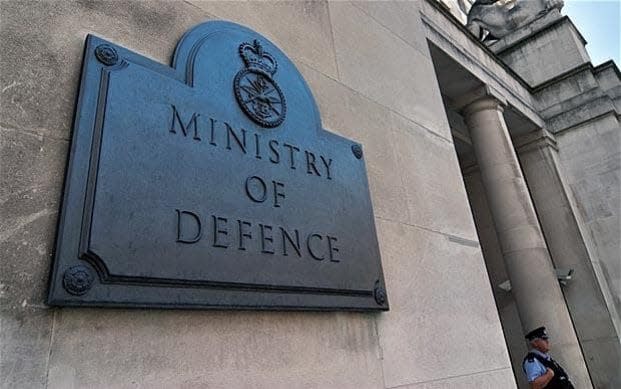MoD fails to cut civilians to help fill '£30bn' defence black hole

A Government plan to cut thousands of civil servants to help fill a black hole in the defence budget has apparently stalled, new figures show.
The Ministry of Defence in 2015 vowed to slash civilian numbers by 30 per cent by the end of the decade in efficiency savings that would balance the defence budget and help pay for new warships, planes, submarines and vehicles.
However the latest civilian manning figures show that the Ministry of Defence has been almost unable to cut numbers at all in the intervening two years.
The figures were disclosed as one of the MOD’s main external consultancy firms estimated that the defence budget black hole could reach £30bn over the next decade.
Roland Sonnenberg, who heads defence consultancy at PwC, said: “UK defence is entering a difficult period; perhaps one of the most challenging periods in a generation, at a time when ambition within our armed forces shows no sign of abating.”
A fall in the pound after Brexit, the rising cost of equipment and an inability to find savings have all been blamed for the black hole.
The disclosure comes weeks after the Government was forced announce it would look again at the 2015 Strategic Defence and Security Review (SDSR) amid fears it cannot pay for its military plans.

Official figures show the MoD had 56,860 civilian personnel when the SDSR announced it would “reduce the number of civilians employed by the MoD by almost 30 per cent”, by 2020. Almost two years later it still has 56,690 civilian employees.
The MoD insisted it was still committed to the 30 per cent cut by 2020, but admitted it would “take time”.
Industry and union sources said there was debate in the MoD over whether to drop the target quietly when the SDSR is examined again.
A senior union source said internal studies had found the target cuts were “undeliverable” and civilian workers could either not be replaced, or the cost of outsourcing would wipe out savings.
Malcolm Chalmers, deputy director general at RUSI, said the efficiency savings promised by Sir Michael Fallon had been critical to making the books balance in the SDSR.
He said: "I had certainly heard that they are falling behind in the search for efficiencies. But It's still quite striking that two years on from the SDSR the civilian figures are still the same."
He said: "When they were talking about efficiency savings, we were all wondering where they would come from. The 30 per cent civilian number was absolutely key to the calculation.”
Procurement costs were due to rise steeply over the first five years of the SDSR, he said, even as number of civil servants and service personnel had stayed the same.
He said: "It just hasn't added up I think from the beginning and that's what's becoming really clear."
An MOD spokesman said: “We have already reduced our civilian workforce by 28,500 since 2010, and remain committed to a further 30 per cent reduction by 2020, as outlined in SDSR 2015.
“We are working across the MOD to ensure our business processes are as efficient as possible, including making best use of modern digital technology. As is the case in any large organisation, this work will take time”.

 Yahoo News
Yahoo News 